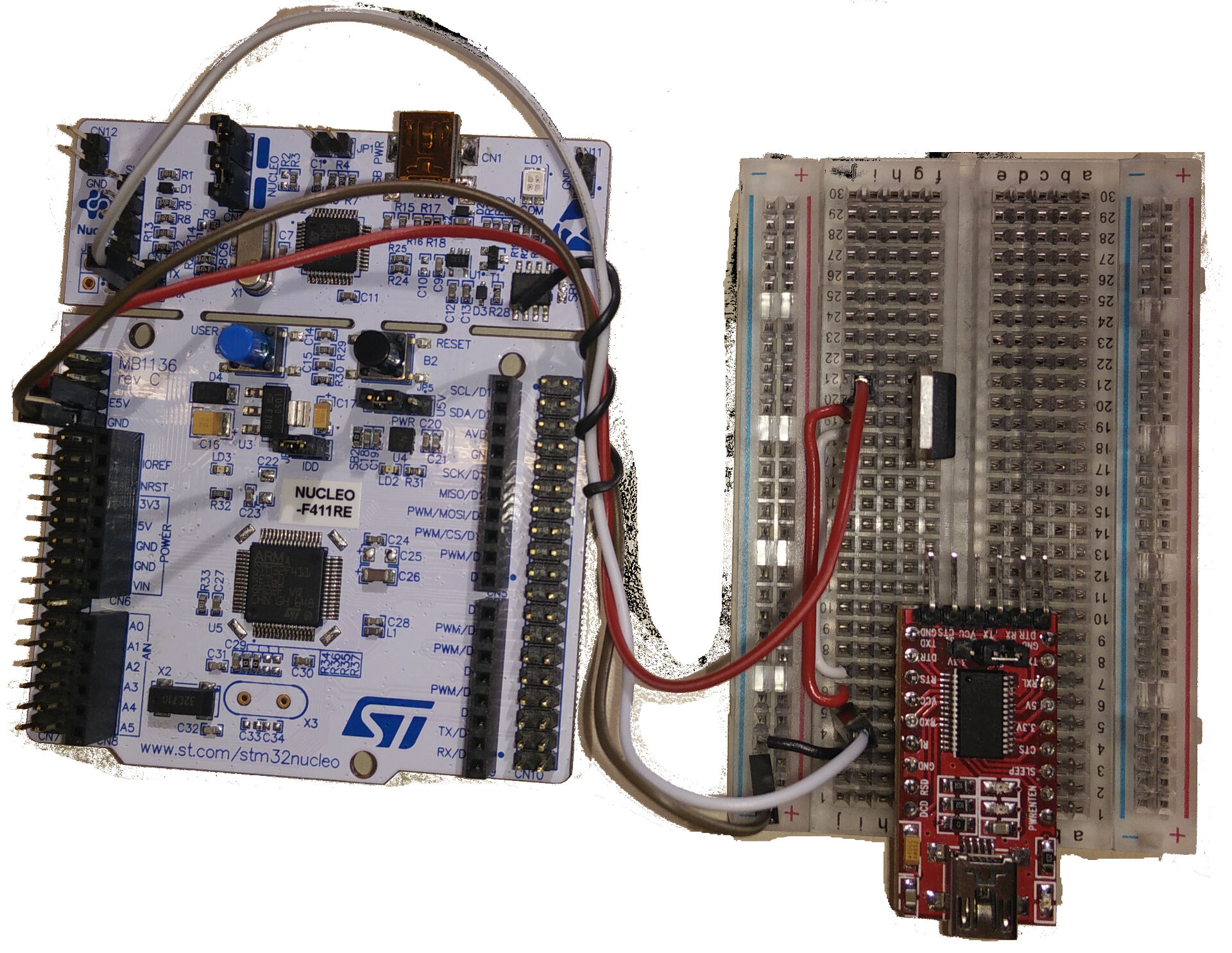mirror of
https://github.com/RIOT-OS/RIOT.git
synced 2025-01-15 20:32:43 +01:00
| .. | ||
| tests | ||
| main.c | ||
| Makefile | ||
| README.md | ||
Tool Introduction
This tool is designed to interface with a test to get the random numbers generated by the using a hash of a block of uninitialized SRAM. In order to run the test a certain hardware setup is required due to the requirement to power off the DUT (device under test) for a certain time. Furthermore, the module detects button and/or software resets. If you push the reset button for example (without powering off the DUT), a warning should be printed to the console.
Setup
Required Tools
- DUT (a supported RIOT target board)
- USB to UART converter that supports setting the RTS pin and 5 volts (ie. FT232RL FTDI USB to TTL adapter)
- MOSFET to control power to the DUT (ie. STP36NF06L)
- Jumper cables
- Solderless breadboard
Wiring Example
- RTS <--> MOSFET gate pin (FT232RL RTS - STP36NF06L 1)
- +5V <--> MOSFET drain pin (FT232RL 5V - STP36NF06L 2)
- DUT Power <--> MOSFET source pin (E15 - STP36NF06L 3)
- DUT UART TX <--> USB to UART RX
- GND <--> GND
Example Setup
Running the test
- Plug the USB to UART converter in (it should be done first so it can autoconnect to the serial port)
- Program the DUT with the puf_sram test
- Connect all wires
- change jumpers to only run on power provided by the USB to USRT converter
- Run the example_test.py
Running Custom Tests
Different tests can be run using the get_seed_list(self, n=10000, off_time=1, allow_print=False) n -> the number of samples to take off_time -> The time that the device is powered off to properly randomize the RAM
